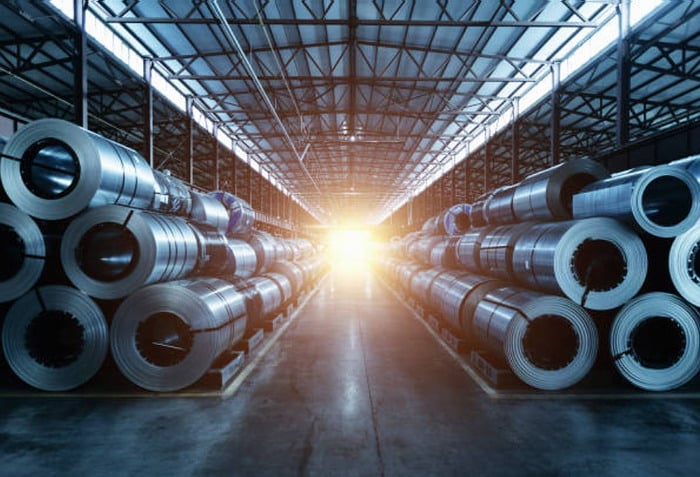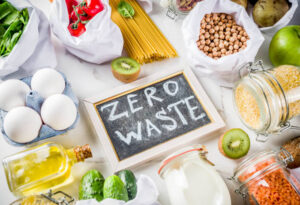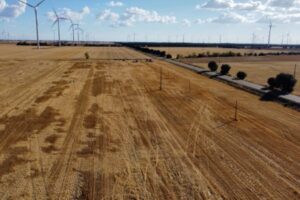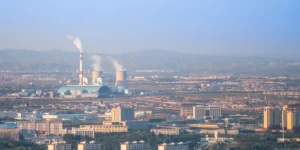Sustainability of Steel Throughout its Lifecycle

The US is leading the way toward decarbonization of the steel industry with increased adoption of electric arc furnaces (EAFs) while the majority of the world continues to use a more traditional method: blast furnace-basic oxygen furnaces (BF-BOFs). With the use of EAFs, steel makers use mostly recycled steel scraps while BF-BOFs create new steel using iron ore and coal.
US steel makers are taking advantage of the high recyclability of steel and lessening the industry’s impact on the environment. Scrap-based production is considerably less energy-intensive compared to producing steel from iron ore and its practice leads to a significant reduction of emissions.
Steel is the World’s Most Recyclable Material
Almost 69 percent of all steel is recycled in North America each year which is only possible because of steel’s durability. It is resistant to corrosion and able to withstand harsh conditions, making it able to last. Once steel is produced and used in a project, the structure can last anywhere from 50-100 years and then can be reused at the end of its lifecycle. Some other materials like concrete can also last up to roughly 75 years, however, its use ends at the structure. The same steel can be endlessly recycled without losing its material properties, resulting in less waste and making it a premier green construction material.
Steel makers can also take scrap from lower value steel products and convert it into high value products, a process that is not typically possible in the case of other building materials like concrete, wood and aluminum. Once other building materials are recycled, their quality is downgraded. Additionally, their material can also only be recycled a limited number of times, whereas steel’s recyclability is endless.
Doing More with Less
Building with hollow structural sections, hollow steel sections, requires less steel to carry the same load when compared with other building materials. HSS’ hollow core design allows for a high strength-to-weight ratio, requiring less steel compared to solid sections or alternative materials. This leads to conserving resources and reducing construction costs while minimizing the weight-bearing demands on foundations.
Steel’s Lifecycle
In order to stay green, the use of EAFs are becoming more popular in the US, whereas a majority of imported steel is made using BF-BOFs. While BF-BOFs rely on molten iron to create steel, EAFs use an electric arc to melt recycled steel scrap. In addition to using more environmentally friendly steel production methods, sourcing recyclable materials is an imperative step in adhering to environmentally conscious practices. In this vein, steel scrap is collected and directed back onto the production cycle for reuse and recycling.
Steel’s recyclability is infinite as its lifecycle does not end. Steel scrap is reintroduced into the steelmaking process. Almost 69 percent of steel is recycled in North America each year. Additionally, according to the American Iron and Steel Institute, 90 percent of the co-products from the steel making process including slag, water, gasses, dust and energy, are reused or recycled. Within EAF steelmaking, specifically, more than 80 percent of recycled steel is used to make new products.
The Importance of Using Electric Arc Furnaces (EAF)
Due to the minimal fuel requirements for combustion, the use of EAFs in steelmaking offers a signification environmental advantage over BF-BOFs. EAFs can operate using one hundred percent scrap metal, drastically reducing the reliance on virgin resources. Additionally, EAF facilities prioritize emissions control by employing state-of-the-art technologies such as Best Available Control Technology (BACT) and Maximum Achievable Control Technology (MACT). These advanced systems enable the capture, control, and reduction of emissions, further underscoring the steel industry’s commitment to minimizing its environmental footprint while producing high-quality steel products.

Steel sheets produced from recycled steel scrap, image source: Unsplash
Life Cycle Assessments are missing a Step
The Life Cycle Assessment (LCA), a process of evaluating the impact that a product has on the environment over the entire period of its life, is flawed as it does not tell the full story of a material’s life, which is especially true for steel. The LCA only takes into account the time between raw material extraction to waste disposal. It fails to recognize the fact that materials, including steel, can be used beyond its disposal. Steel is the only building material that is infinitely recyclable. Since these assessments don’t consider the fact that steel’s lifecycle doesn’t end once the product is at the end of its life, they’re misleading. Steel products are continuously melted back down and reused to create other steel products, without compromising strength and durability.
Conclusion
Steel is a premier green building material. Its exceptional durability and longevity reduces the need for frequent replacements and conserves resources over time. Unlike other building materials like concrete, steel can be recycled endlessly without compromising its material properties. LCAs must evolve to encompass the full story of steel’s lifecycle, emphasizing its role as a premier green construction material.







